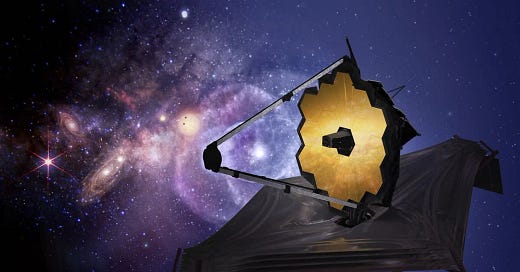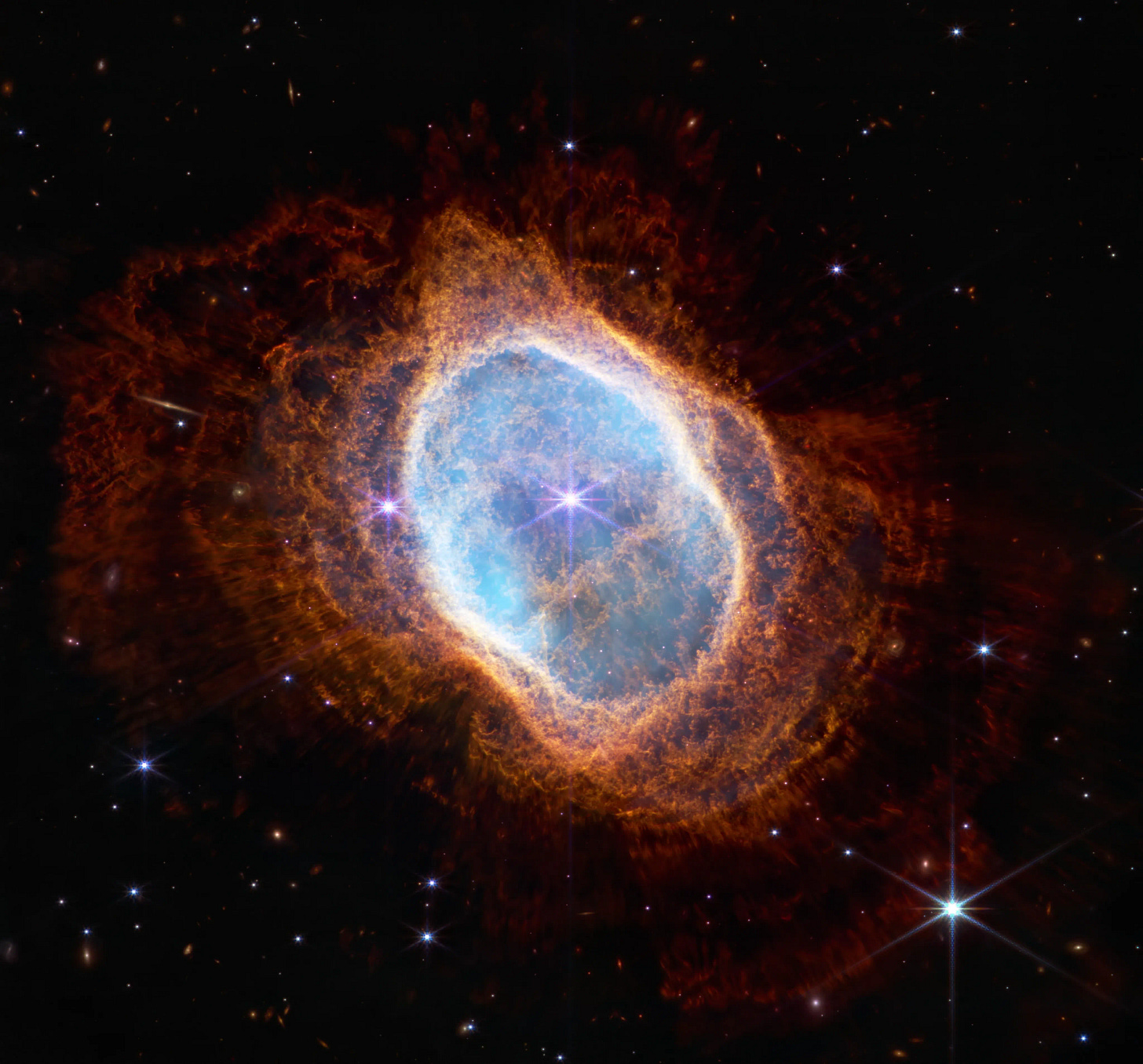Thank God for the James Webb Space Telescope
I love stargazing. Not for what it is, per se. It is, after all, just a bunch of stars and a moon. But for what I know is out there beyond what I can see. It has become for me a religious experience.
Is that normal, what I do? Is it normal at my age to be so fixated on the cosmos? When pictures from the James Webb space telescope come in, I’m right there, scanning the image, getting my mind around the distances between objects, trying to grasp the fullness of space, enamored by its symmetry, shocked at how tiny we are, and thankful for a camera floating a million miles from earth.
How lucky are we? How incredibly fortunate to see beyond what the naked eye can see.
Sure, on a great night we see a lot…if it’s clear, and we’re high up on a mountain, far away from man-made light, what we see is stunning, almost electric, almost buzzing with aliveness.
But, if I’m honest, it’s also a bit monotonous. It’s a lot of the same. It’s a million white lights, all pretty much the same size. Okay, on a great night you might get to see the smudge of the Milky Way or some other cosmic element, but most of what you see are stars, stars, and more stars.
Last month I laid down in a sleeping bag at elevation, far from man-made light. I thought if I was warm and relaxed, I could really concentrate on the night sky and see things I’d never seen. Well, I was warm, and I was relaxed, and I gazed into the sky for a while. But after the initial wonder passed, it was mind-numbingly the same.
But the James Webb gives us so much more. We have floated a telescope a million miles from us, beyond our distorting atmosphere, and captured images of space we never knew existed. Its cameras capture infra-red and ultraviolet light as well as what we can see. It has opened up our universe beyond the imagination of our greatest scientists.
The telescope has also captured light from galaxies never before seen. By measuring the spectrum of light, we can gauge its distance. We have captured light that has been traveling in our direction for over 13 billion years before it hits our lens. Are you kidding me? Did you get that? That light has been traveling since near the beginning of the universe. What?!?
Think of it this way: Proxima Centauri is the nearest star to us. Its light travels at 186,000 miles per second (yes, per second), which is the equivalent of circling our globe 7.5 times in one second. A photon of light emitted from Proxima four years ago, when COVID was just getting started, just reached earth a minute ago. Four years! And that is the NEAREST star to us. Mind-blowing!
So what! So your mind is boggled…what does that even mean?
Well, I’ll tell you what it means to me. To think about how big and beautiful and artistic and symmetrical this universe is, is humbling. It shows me how tiny I am and this earth is, and even our solar system is. But it also shows me how special I am and people are and consciousness is in this vast space. It shows me how unique awareness is and especially spiritual awareness. The presence of a soul, residing in a being, within this massive universe, is its own miracle to me.
It also causes me to ask, “Does great knowledge bring with it great responsibility?”
I think it does. No other people in the history of people have seen what we have seen. Most of them saw black and white and only a tapestry. We’ve seen in full color, HD, infrared, and ultraviolet. They saw pencil sketch; we’ve seen Van Gogh.
Even if you’re not a believer, you must admit, the images make you think…the distances make you think…the artistry of it makes you think…the consistency of it makes you think.
This cosmic perspective even affects how I view religion. It makes some of the gnat-straining I see churches do seem petty. It makes them seem like navel-gazers, missing the night sky, while they fetch lint out of their belly button. I don’t want religion to cause me to miss God. I want to worship the God worthy of this universe.
To me, this late in my life, after studying the Bible for decades, after being a Christian for almost fifty years, after serving as a pastor, after making it through the great family challenges I have, after learning to stay strong spiritually outside of organized religion, the God of a cosmos this large is a big God. And his interest in us, a mere speck of a speck in the universe, is beyond comprehension. BEYOND! But his interest in me IS within comprehension. And I appreciate that interest and the mystery of it and the logic of it.
So, I’m going to keep staring into the night sky every night. I’m going to fix on a star, notice the twinkle, think about the travel of those photons, imagine that glowing sun so far away, put all my worries into perspective, and think about God.
Wanna join me?







This story is going make me go outside and stare at the beautiful night sky.
Good article. And this is why I don't own a telescope. It all just looks the same, if we're honest.
In 2002 or so when Mars was at its closest point to Earth, I got to go to the Lick Observatory in San Jose and look through the big refracting telescope. Again if we're honest, it was like looking at a flashlight. You could BARELY make out the polar ice caps. Nothing at all like the great Mars photos we've gotten lately.